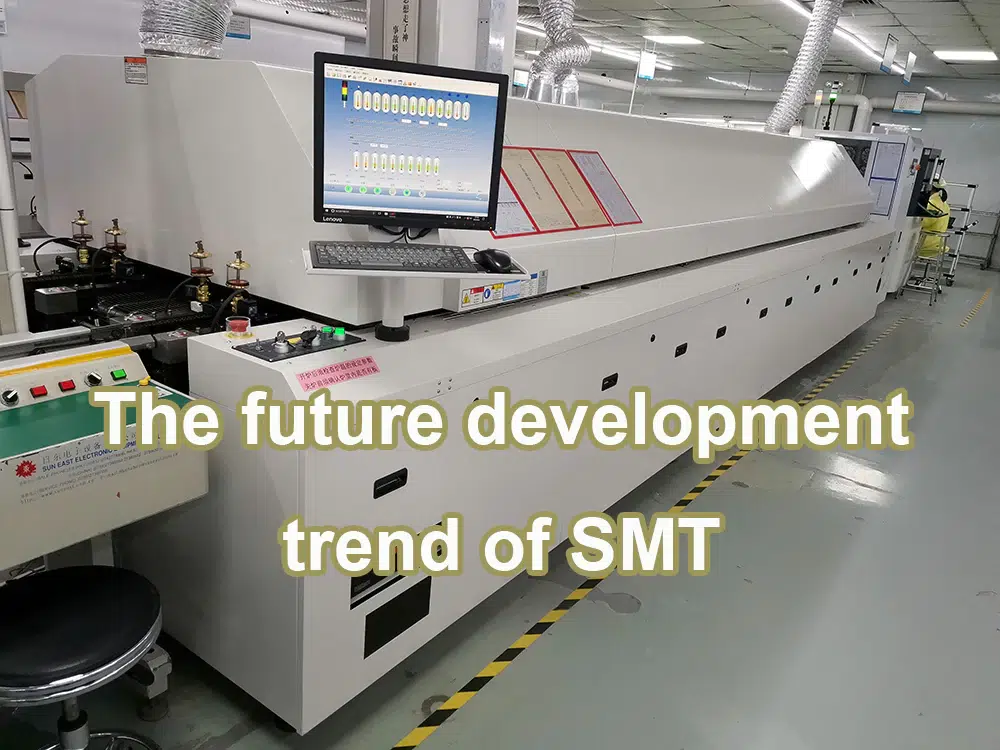As an indispensable communication tool in people’s lives, modern mobile phones involve many sophisticated technologies in their manufacturing process. Among them, surface mount technology (SMT) is a crucial part of mobile phone production. This article will introduce the surface mount technology process in mobile phone production, including the placement process, assembly process, key equipment and future development trends, etc., let’s unveil the mystery of mobile phone production together.
Table of Contents
Overview of the surface mount technology
Surface mount technology (SMT) is a process in which electronic components are mounted on the surface of a printed circuit board (PCB). It pastes various electronic components to the PCB through a precise placement process to complete the connection and assembly of the circuit. Compared with traditional plug-in assembly, SMT has the advantages of small size, light weight, high production efficiency and strong reliability, and is widely used in the manufacturing process of electronic devices such as mobile phones.

The process of surface mounting technology
Design and manufacture of PCB boards
In the mobile phone manufacturing process, you first need to design and manufacture the PCB board. Designers use electronic design automation (EDA) software for PCB design based on the functional requirements and layout requirements of the phone. Then, the PCB board is manufactured by chemical corrosion or machining, including the material selection, lamination, circuit design and aperture processing of the substrate.
Prepare the placement component
Mounting components are various electronic components in mobile phones, including chips, capacitors, resistors, connectors, etc. During the SMT process, placement components need to be prepared and sorted, cleaned, and calibrated to ensure their quality and accuracy.
Placement process
The placement process is a central part of the SMT process. It consists of the following main steps:
a. Determining component position: In the placement process, the precise position of each component on the PCB board needs to be determined first. This is usually positioned and calibrated in real time by automated optical inspection equipment or machine vision systems.
b. Tin and glue: Tin and glue processing is required on the PCB board. Tin is applied to provide a good solder connection, while gluing is used to secure and protect the elements.
c. Dispensing: For certain components that require additional fixation or areas with special requirements, a dispensing process is used to apply glue or adhesive to the components to ensure a firm adhesion.
d. Soldering: In the soldering stage of the mounting process, the mounting components are welded to the PCB board through equipment such as hot blast furnace or reflow soldering furnace. Commonly used welding methods are surface welding technology (SMT) and wave soldering technology.
e. Testing and calibration: After the placement is completed, quality inspection and calibration are required. Verify the location, quality, and connectivity of mounted components through automated optical inspection equipment or manual visual inspection.
Assembly and testing
After completing the placement process, assembly and testing are carried out. This includes assembling the mounted PCB board with other components such as screens, batteries, cameras, etc., and conducting functional and performance tests to ensure the proper operation of the phone.
Inspection and packaging of finished products
Finally, the assembled mobile phone is inspected as a finished product to check whether its appearance, performance and function meet the requirements. Through various testing and verification processes, ensure that the phone meets quality standards. The phone is then packaged for sale and shipping.
The key equipment of surface mount technology
In the SMT process, a series of key equipment applications are involved, including automatic placement machines, reflow soldering furnaces, automatic optical inspection equipment, etc. These devices achieve accuracy and efficiency in the placement process through precise operation and efficient automation.
The future development trend of SMT

Surface mount technology continues to evolve as technology continues to advance and electronics continue to innovate. In the future, SMT technology will move towards more miniaturization,
High density, high speed and high reliability. For example, more advanced miniature components, flexible adjustable processes and intelligent automation equipment are used to meet the increasingly complex and diverse needs of electronic products. In addition, the following future trends can be foreseen:
Application of 3D printing technology: 3D printing technology will bring new possibilities to surface mount technology. Through 3D printing, more complex PCB board design and assembly structures can be realized, improving manufacturing efficiency and flexibility.
Smarter automation devices: As artificial intelligence and machine learning advance, automation equipment will become smarter. The development of technologies such as intelligent vision systems, machines that automatically adjust process parameters and automatic fault detection will further improve production efficiency and quality control capabilities.
Promotion of lead-free soldering technology: For environmental protection and health considerations, lead-free soldering technology will become a future development trend. Lead-free soldering can reduce environmental pollution and provide a more reliable solder connection.
The development of integrated circuits: The development of integrated circuits (ICs) will further promote the advancement of surface mount technology. The emergence of smaller, high-performance IC chips will provide more powerful functions and performance for electronic devices such as mobile phones.
Conclusion
Surface mount technology (SMT), as a core link in modern mobile phone production, provides an efficient, precise and reliable solution for mobile phone manufacturing. Through the placement process, assembly process and the use of key equipment, the manufacturing process of mobile phones from parts to finished products is realized.
As technology continues to evolve, surface mount technology will continue to evolve to achieve more miniaturization, high density, and high reliability production requirements. In the future, with the application of 3D printing technology, intelligent equipment and lead-free soldering technology, mobile phone production will usher in a new era of more innovation and sustainable development.










